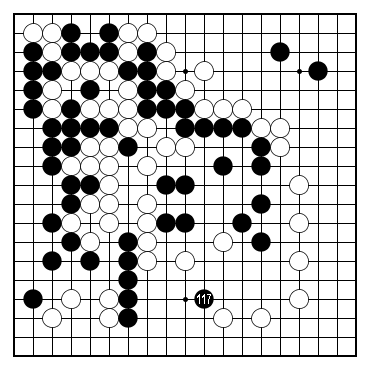Women's Meijin - 2007
Kato Keiko took the 19th Women's Meijin title from Aoki Kikuyo.
Final result: 2-1
Quick links to the games: Game 1 Game 2 Game 3
Women's Meijin is one of the professional Go titles in Japan reserved for women. It is played in a best-of-three system.
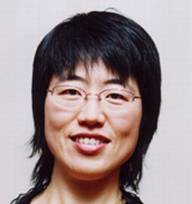
The title holder from last year is Aoki Kikuyo 8 dan, a student of Kikuchi Yasuro (just like the current Kisei holder, Yamashita).
I attended Kikuchi sensei's school in Tokyo for several weeks while I was insei in Japan, and both Aoki and Yamashita were there. Both were already professionals, and Aoki Kikuyo was teaching the other students. I'll write a separate article to describe Kikuchi sensei's Go school.

The challenger is Kato Keiko 5 dan.
She and I were insei at in the same period - she also lived at the Igo Kenshu Center for the first year or so during my stay there - but she was always at least one class higher than I was in the league. We played at least two games together in the insei league, in B class (when she was oscillating between A and B and I went from C up to B).
Kato Keiko became professional shodan in 1999.
Game 1
Game 1 was played on February 21st, 2007. Kato Keiko won by 6.5 points.
Kato Keiko won the first game in a powerful manner. She played very bravely in the beginning of the game, by building thickness very early at the expense of letting White play twice against her shimari.
The position in the diagram below is from the first game and it is a great example of using thickness. What to play next with Black - choose from A to G?
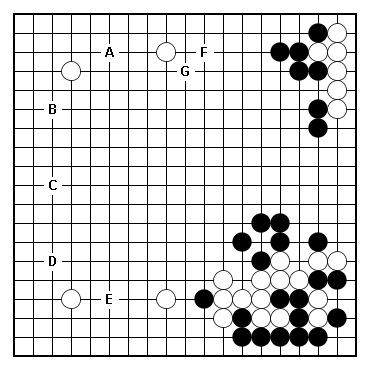
In the diagram above, F and G are the worst choices: black is very thick on the right side, and she shouldn't try to turn that into territory directly, because the center is still open and if Black is getting defensive, white will end up building a lot more on the left side.
B, C and D are all OK moves, I guess, since the left side is large. But they all ignore Black's thickness.
E is trying to separate and put pressure on the white group in the lower right corner. On the other hand, if Black plays D instead and White responds with E, White's lower side is open at the bottom which is an advantage for Black: I think it's a bit too early to decide between D and E for Black.
Kato Keiko chose A, which is meant to turn the White stone on the middle of the upper side into a group for Black to attack using the thickness on the right. This is the way to use thickness: separate and attack.
Now, to compare A and B for Black (same as we did for D and E): if Black B, white is happy to play A, and his resulting formation is perfect. There is no way after that for black to use his thickness on the upper side.
A new crucial moment comes a little bit later in the games, in the diagram below: Black has given away some more territory (this time in the upper left), but managed to build a huge moyo in the center of the board, in sente. White just invaded in the center of the board, just before Black would get a chance to play in that area and make all into territory. Where would you play next with Black? No hints this time.
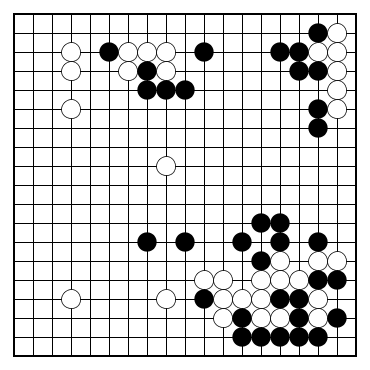
Defending the right side submissively wouldn't be enough, especially since it's open on the 2nd line. Black has to play forcefully and attack the invader. Another great example of what to do when one has thickness.
See the following diagram for how the game proceeded: see how Black can unleash maximum of boldness, given the overall thickness.

In the game white gave up the stones in the center and entered in most of Black's moyo, but it wasn't enough for White to win.
Game 2
Game 2 was played on February 28th, 2007. Aoki Kikuyo won by resign.
This is where I think Aoki (who plays Black in this game) turned this second game in her favor. Kato had the initiative while she chased the Black group on the lower side, then took gote when she switched to the upper left corner and closed it.
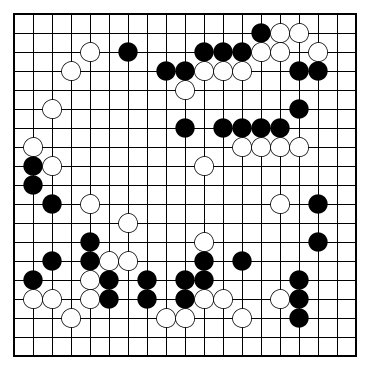
Black decided that the area in the center isn't White's territory. If you look over just a very narrow distance around Black 1, it looks like Black is playing in a White area and his invading stone is in danger. Once we expand the area we're looking at, though, we're seeing the Black is pretty thick in this wider area, and this "invading move" is actually exposing White's weaknesses.
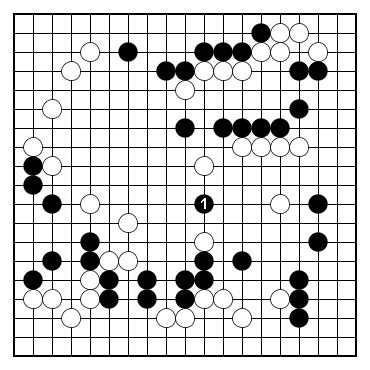
See the game continuation in the next diagram: what initially looked like some White territory in the center turns into 2 White groups. White chose to reinforce the one on the right in the sequence to White 16, but Black 19 maintains the pressure on the other one.
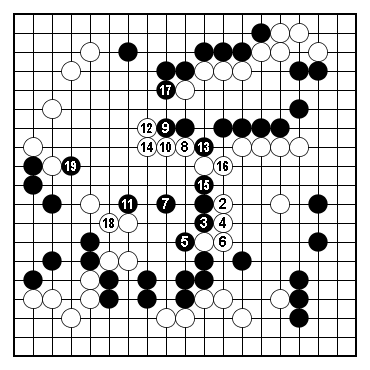
Game 3
Game 3 was played on March 7th, 2007. Kato Keiko won by resign.
The following diagram shows the "almost final" position of the game: Black to play, finish the game in one move, and become Women's Meijin.
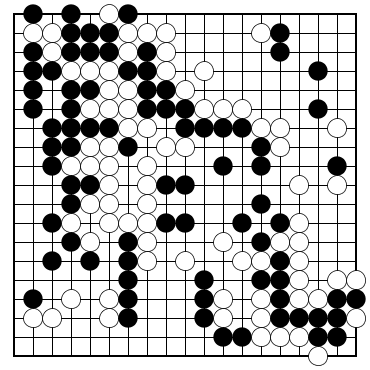
Move 169 was the last move of the game: it makes A and B miai, which turns the lower right corner into a semeai that Black wins (since Black has one eye and White has none). This situation occurred because White ignored a forced move by Black a few moves earlier. Had White defended correctly earlier, it would have turned into a long, close game, I think.

The main theme of this game was Black attacking the White group in the upper-left which emerged after one of the infinite number of variations in the nadare joseki. The diagram shows Black 69 which reinforces the Black group in the center (which has a weakness at A) while setting up an attack on the White group on the left.
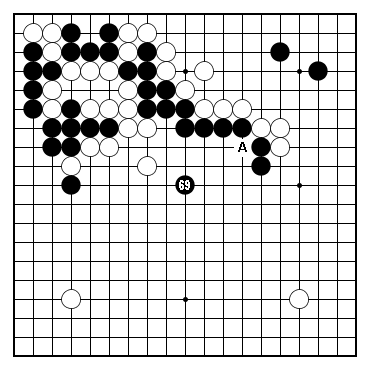
Another theme of the game is White ignoring Black's attack - we can see in the next diagram, a few moves later, that White hasn't added any stone to her group in the upper-left, but played big moves on the right side an lower right corner. Black 77 attacks White's eye shape. Black could have capped at A instead, but White 77 would then have made eye shape quite easily - and A is too far away from the lower side to really make a difference, Black must have thought.
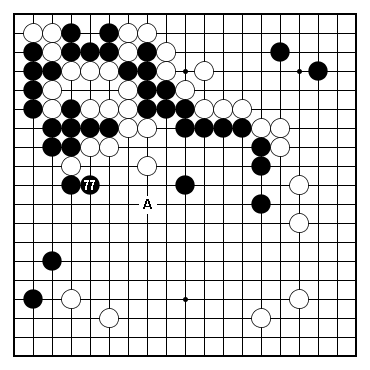
Just two moves later, Black attacks violently with a keima. The direction of attack is very important: Black wants to build more thickness in the center, to erase white's influence in the lower right area. Also, Black doesn't want her group in the center to be surrounded and be forced to live small.
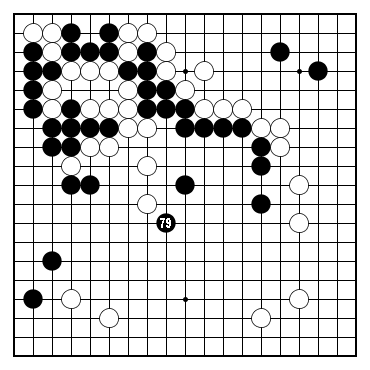
Fast forward several moves: Black kept attacking White while building the left side, while White played another big point, the 3x3 in the lower left. Black 93 is a leaning attack against the White group in the center.
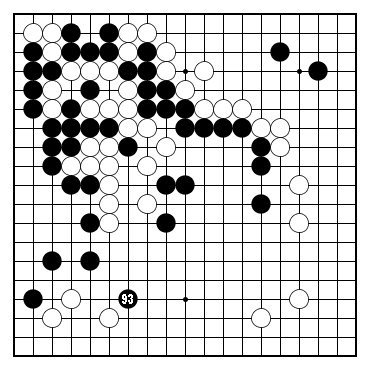
Black is attacking White again with 101 - the purpose here is not to force White to live small, but to drive her out and chase her. After 101, it's not White's choice to live locally or not - it's a little tsume-go problem to see why is that.
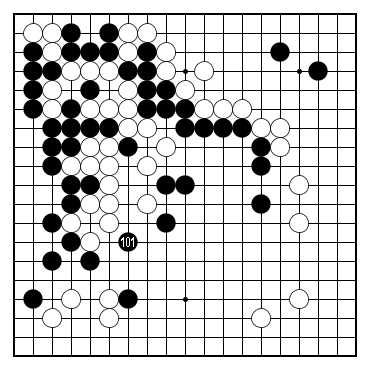
And finally, the last Black attack comes with 117, another leaning attack against the White group in the center. White immediately made eyes for her group after this move, putting an end to an attack that lasted for the past 50 moves or so.
